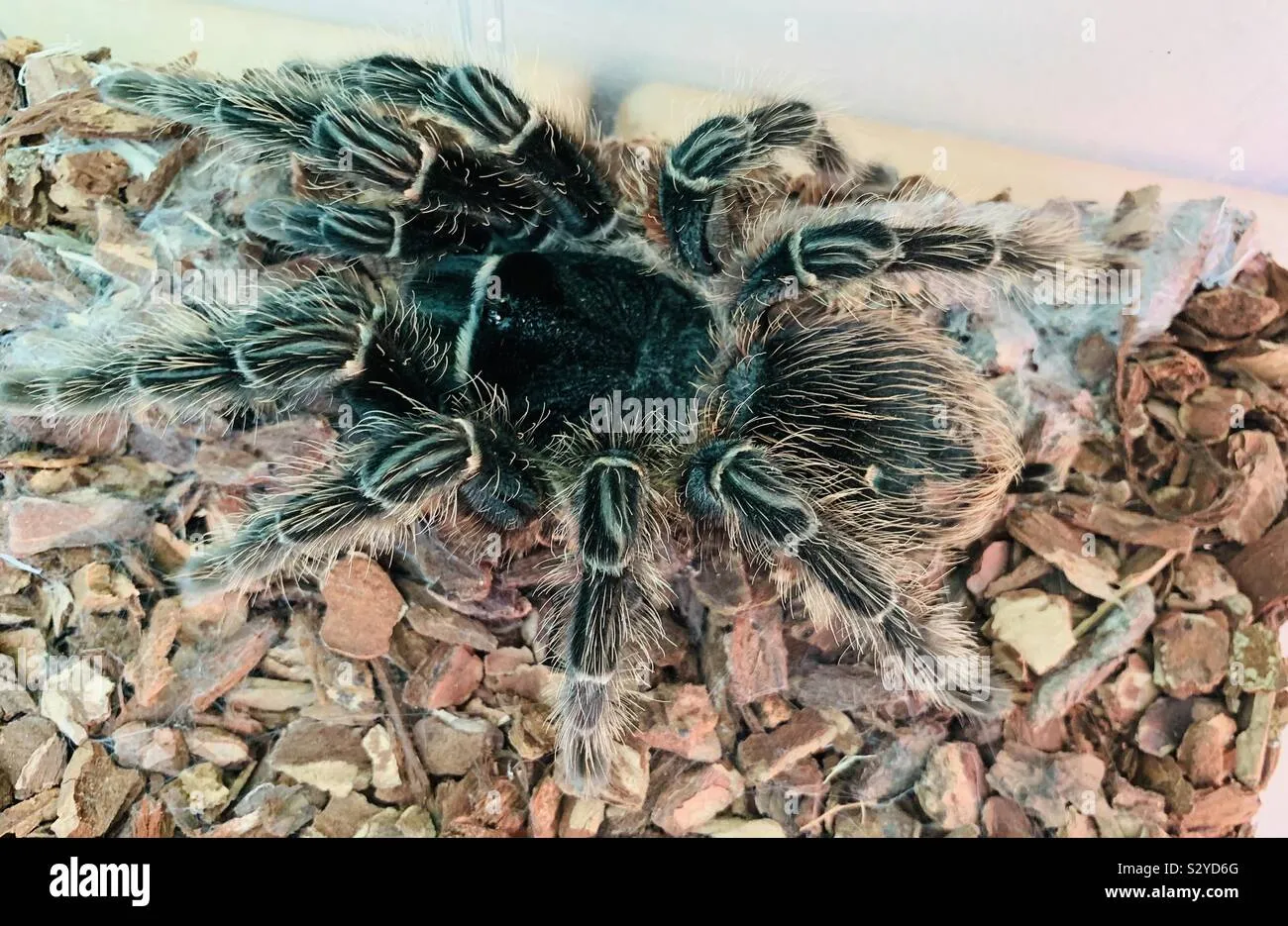What is a Birdeater Tarantula?
The Birdeater tarantula, scientifically known as Theraphosa, is one of the largest spider species in the world, native to the rainforests of South America. These impressive arachnids are known for their size, with some individuals reaching a leg span of over 10 inches. Despite their intimidating appearance, they are popular among tarantula enthusiasts. These spiders are typically docile, but they can defend themselves by flicking urticating hairs, which can cause skin irritation. Observing their eating habits is fascinating, and providing the right diet is crucial for their health and longevity. They are true wonders of the natural world, and keeping them involves understanding their complex dietary needs.
Where Do Birdeater Tarantulas Live?
Birdeater tarantulas are primarily found in the rainforests of South America, including countries like Brazil, Guyana, Suriname, and Venezuela. They prefer humid environments with plenty of ground cover, such as leaf litter and burrows. These spiders are terrestrial, meaning they spend most of their time on the ground. They often create burrows or utilize existing shelters to hide from predators and ambush prey. The specific habitats can vary depending on the species, but they generally favor areas with high humidity and moderate temperatures. The environments are essential for their survival. The preservation of their natural habitats is vital for their continued existence in the wild.
What Do Birdeater Tarantulas Eat?
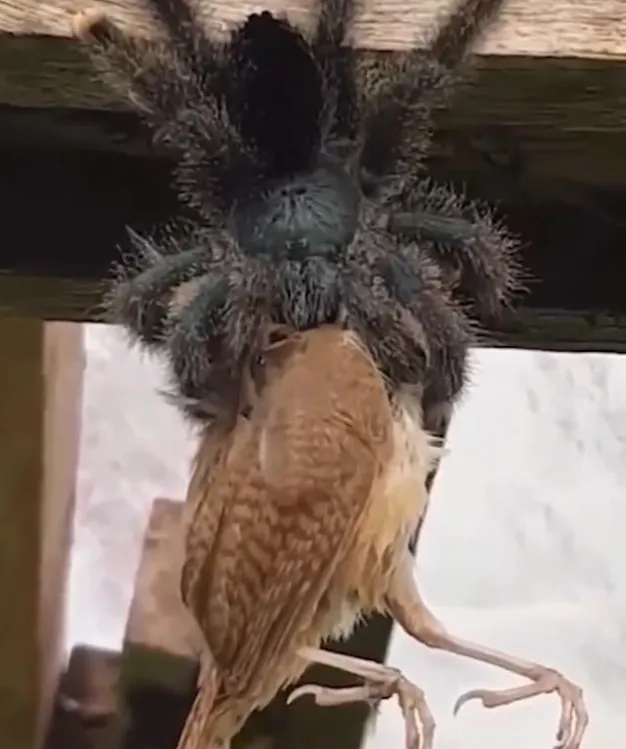
The diet of a Birdeater tarantula is varied, reflecting their opportunistic predatory nature. They are carnivores, and their primary food sources include insects, small vertebrates, and sometimes even small birds, though this is less common in captivity. In the wild, they will hunt whatever prey they can overpower, including crickets, cockroaches, beetles, and even small rodents. A well-balanced diet is critical for their health and growth. Understanding what a birdeater tarantula eats is fundamental to providing proper care and ensuring their well-being, whether in a controlled environment or observing them in their natural habitat.
Top 5 Amazing Foods for Your Birdeater Tarantula
Providing a varied diet is important for the health and happiness of your Birdeater tarantula. Here are some of the best food options, ensuring they receive the necessary nutrients for growth and well-being.
Mealworms
Mealworms are a readily available and nutritious food source for Birdeater tarantulas. They are relatively easy to breed and maintain, making them a convenient option for tarantula keepers. Mealworms are rich in protein, which is essential for the tarantula’s growth and molting process. However, they should be supplemented with other food items to provide a balanced diet. The exoskeleton of mealworms can be a bit tough, so feeding them to smaller tarantulas may require cutting them up or offering freshly molted mealworms.
Crickets
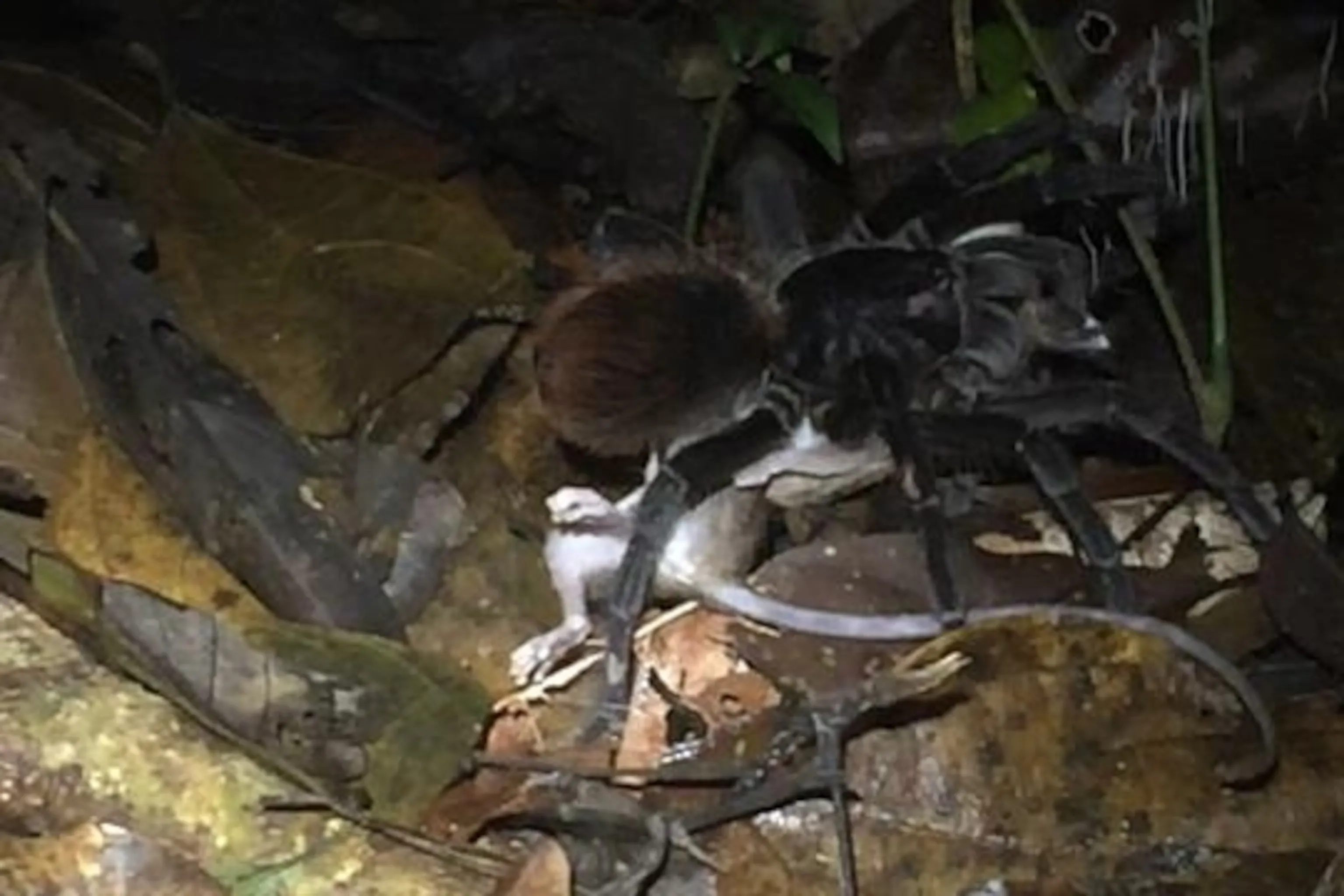
Crickets are a classic food choice for tarantulas and are a good source of protein. They provide a natural hunting experience for your tarantula, as they are active and can stimulate the spider’s predatory instincts. Crickets should be gut-loaded with nutritious food before being fed to the tarantula. This ensures that the tarantula receives a balanced diet. Ensure that any uneaten crickets are removed from the enclosure, as they can stress the tarantula or even injure it during molting.
Roaches
Roaches, such as Dubia roaches, are an excellent food option. They are packed with nutrients and are less likely to burrow or hide, making them easy for your tarantula to hunt. Roaches have a good meat-to-exoskeleton ratio, which is beneficial. They are also relatively easy to breed, providing a consistent food supply. Proper gut-loading is also crucial to optimize the nutritional value of the roaches. Many tarantula keepers consider roaches a staple food due to their nutritional benefits and ease of care.
Pinky Mice
Pinky mice (baby mice without fur) can be an occasional food source for adult Birdeater tarantulas. They are high in protein and can provide a significant nutritional boost. Feeding pinky mice should be done sparingly, perhaps once a month or less, as they are high in fat and can lead to overfeeding. Always make sure the pinky mouse is appropriately sized for your tarantula. Observe your tarantula’s reaction to this food, and adjust the frequency as needed to maintain its health.
Small Birds
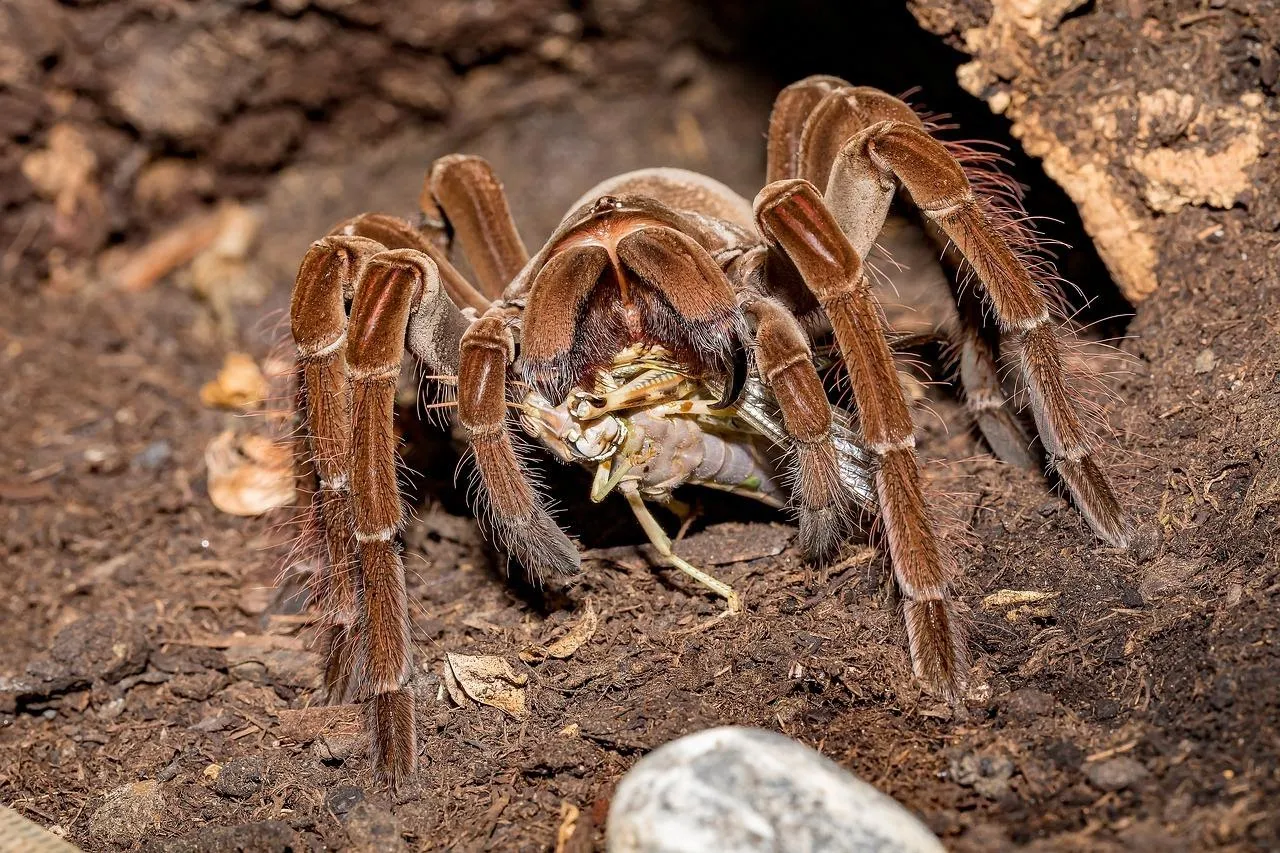
In their natural habitat, Birdeater tarantulas may occasionally consume small birds. In captivity, offering pre-killed chicks can be a supplement to their diet, though it is not a necessity. As with pinky mice, this should be an infrequent treat. Ensure the bird is of appropriate size. Overfeeding with high-fat foods can lead to health issues. Always prioritize a balanced diet with insects as the primary food source.
How to Feed Your Birdeater Tarantula
Feeding your Birdeater tarantula correctly involves understanding the right frequency, portion sizes, and overall care. It is crucial to maintain their health and encourage their natural behaviors. Feeding habits should be carefully planned to avoid both underfeeding and overfeeding, ensuring the tarantula thrives.
Feeding Frequency
The feeding frequency for Birdeater tarantulas depends on their age and size. Spiderlings and juveniles should be fed more often, typically every 3 to 7 days. Adults can be fed less frequently, such as once every 1 to 2 weeks. Observe your tarantula’s behavior; if it consistently refuses food, you may be overfeeding it. Adjust the schedule based on your spider’s appetite and overall health.
Portion Sizes
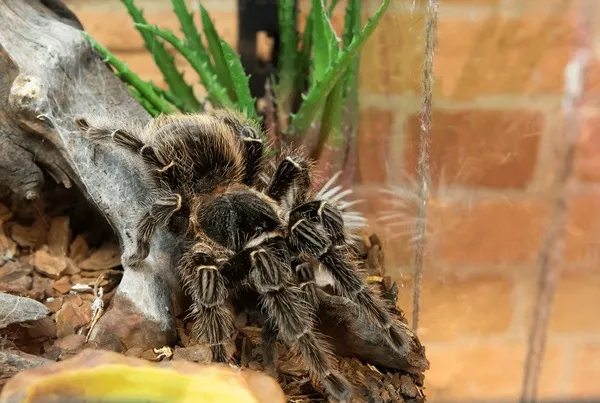
The portion size should be proportional to the tarantula’s size. Avoid giving prey that is larger than the tarantula’s abdomen. For juveniles, start with appropriately sized insects or small portions of prey. For adults, one or two appropriately sized insects or prey items are often sufficient. Overfeeding can lead to health problems, so it is essential to monitor the tarantula’s condition and adjust accordingly.
Water and Hydration
In addition to food, providing a constant supply of fresh water is vital for your Birdeater tarantula’s health. A shallow water dish should always be available. Regularly check and refill the water dish, ensuring it is clean. The availability of water is crucial for their hydration and overall well-being.
Special Considerations
Caring for a Birdeater tarantula requires attention to detail. There are some special considerations that owners should keep in mind to ensure their pets live a long and healthy life. Their health depends on more than just food; it includes their environment and a consistent routine.
Avoid Overfeeding
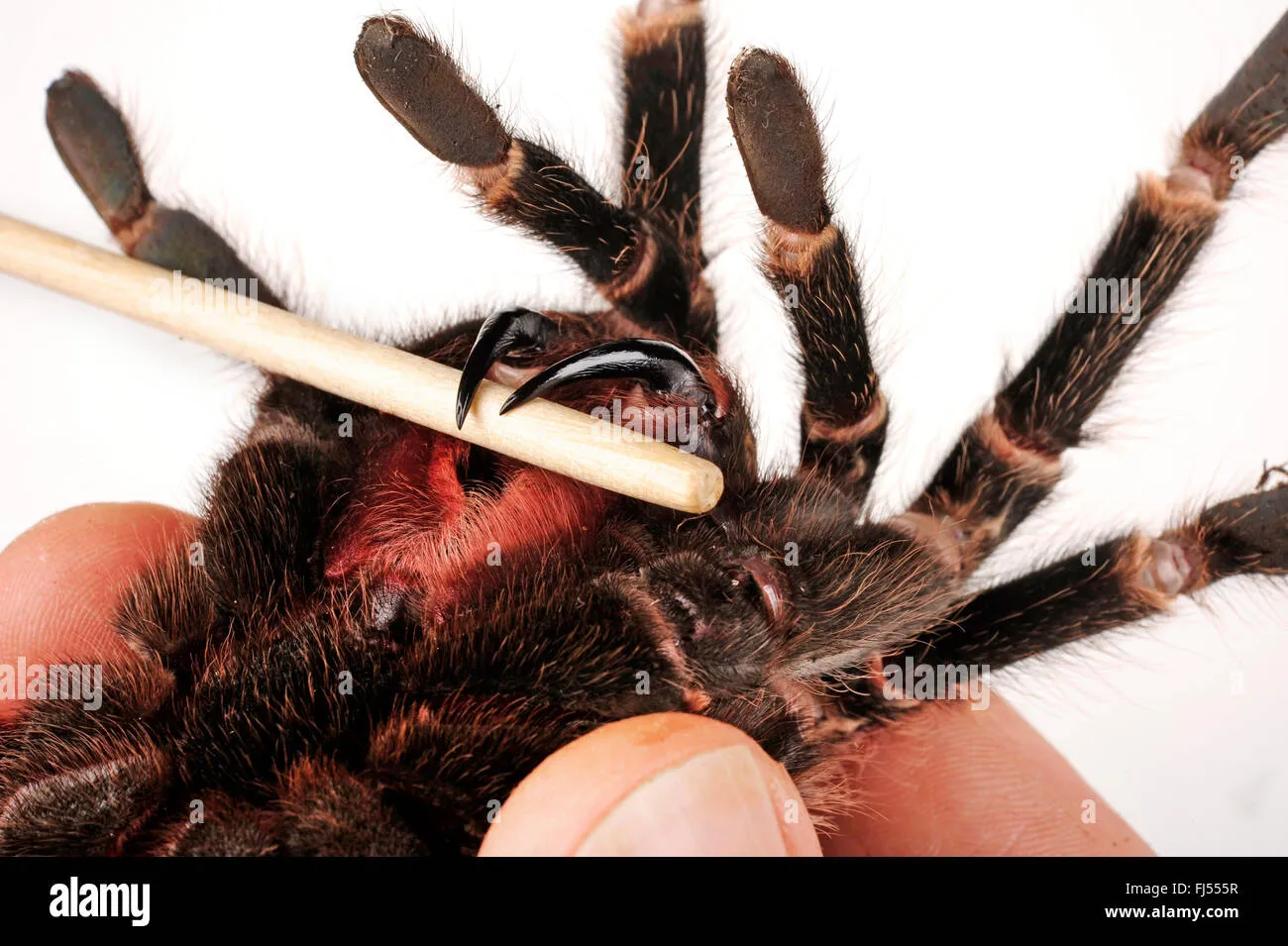
Overfeeding can lead to several health issues, including obesity and potential problems with molting. A well-fed tarantula should have a slightly rounded abdomen, but it should not be excessively large. If your tarantula refuses food, it may not be hungry or might be preparing to molt. Avoid feeding it during molting periods.
Cleanliness of the Habitat
Maintaining a clean habitat is essential for your Birdeater tarantula’s health. Remove any uneaten food and old molts promptly. Regularly clean the enclosure to prevent the buildup of mold, bacteria, and other contaminants. The cleanliness of the environment supports the overall well-being of your pet.
Caring for a Birdeater tarantula is a rewarding experience. By providing the right diet, appropriate environment, and consistent care, you can ensure that your tarantula thrives. Remember to observe your tarantula closely and adapt your care practices as needed. Enjoy the fascinating world of these remarkable creatures and watch them thrive under your care.
